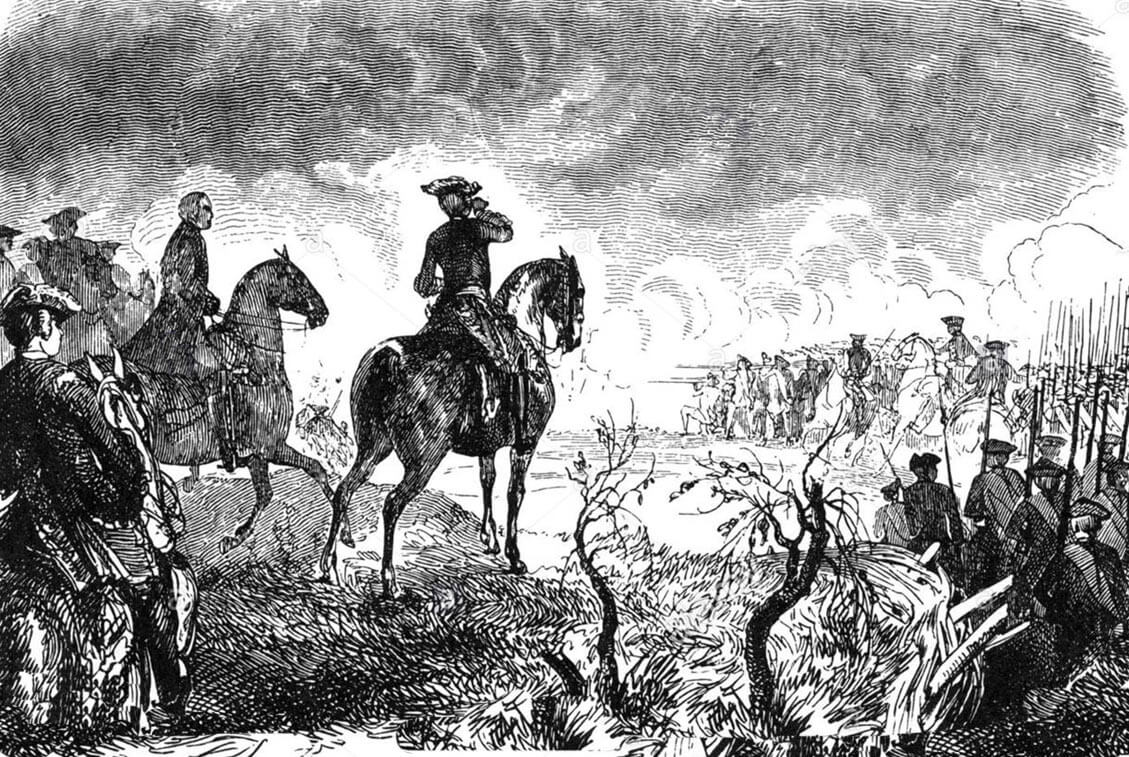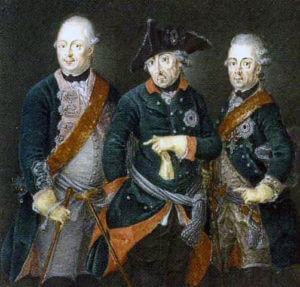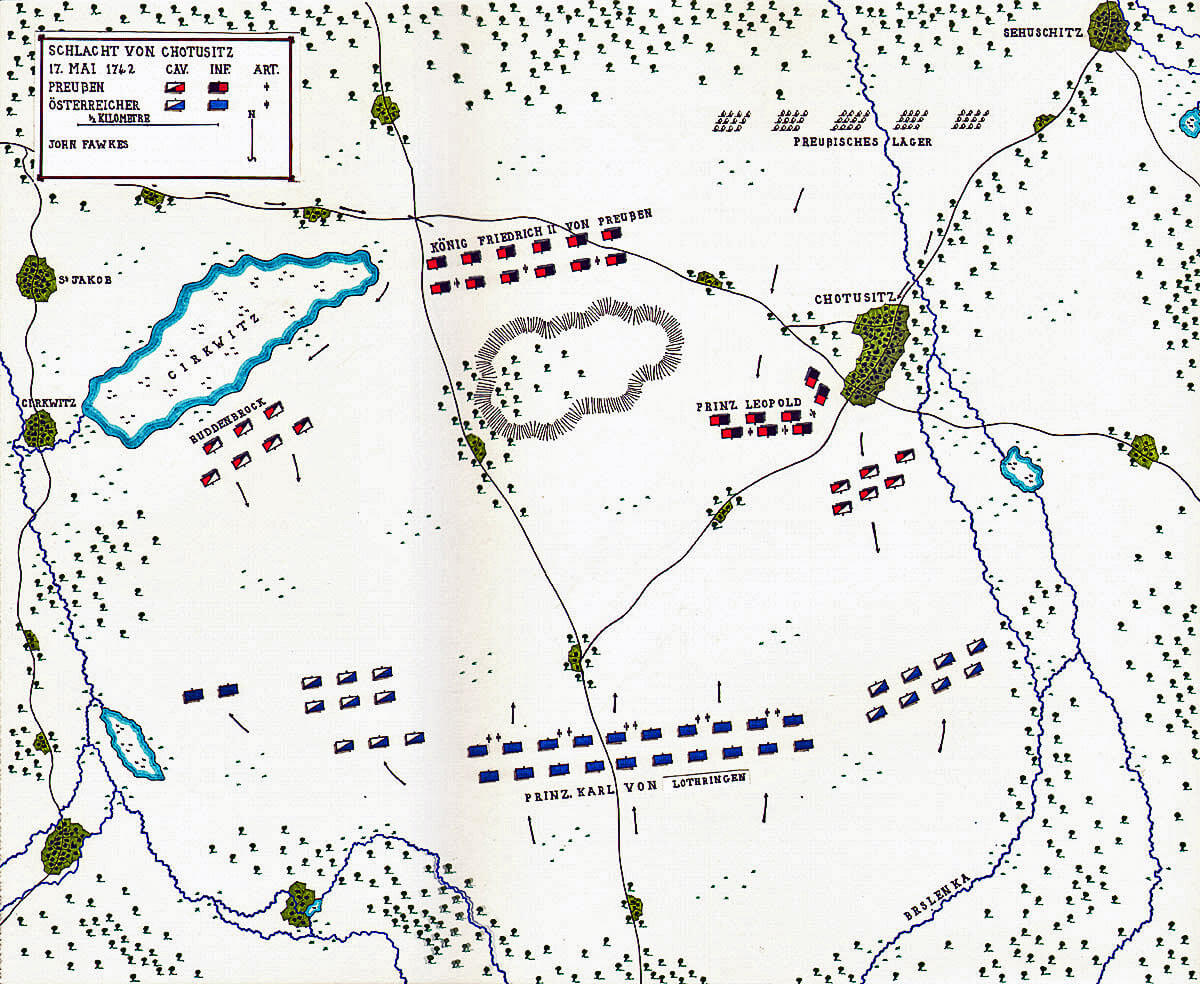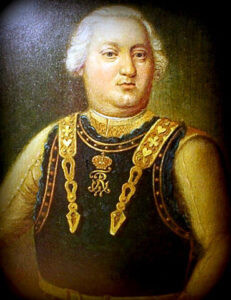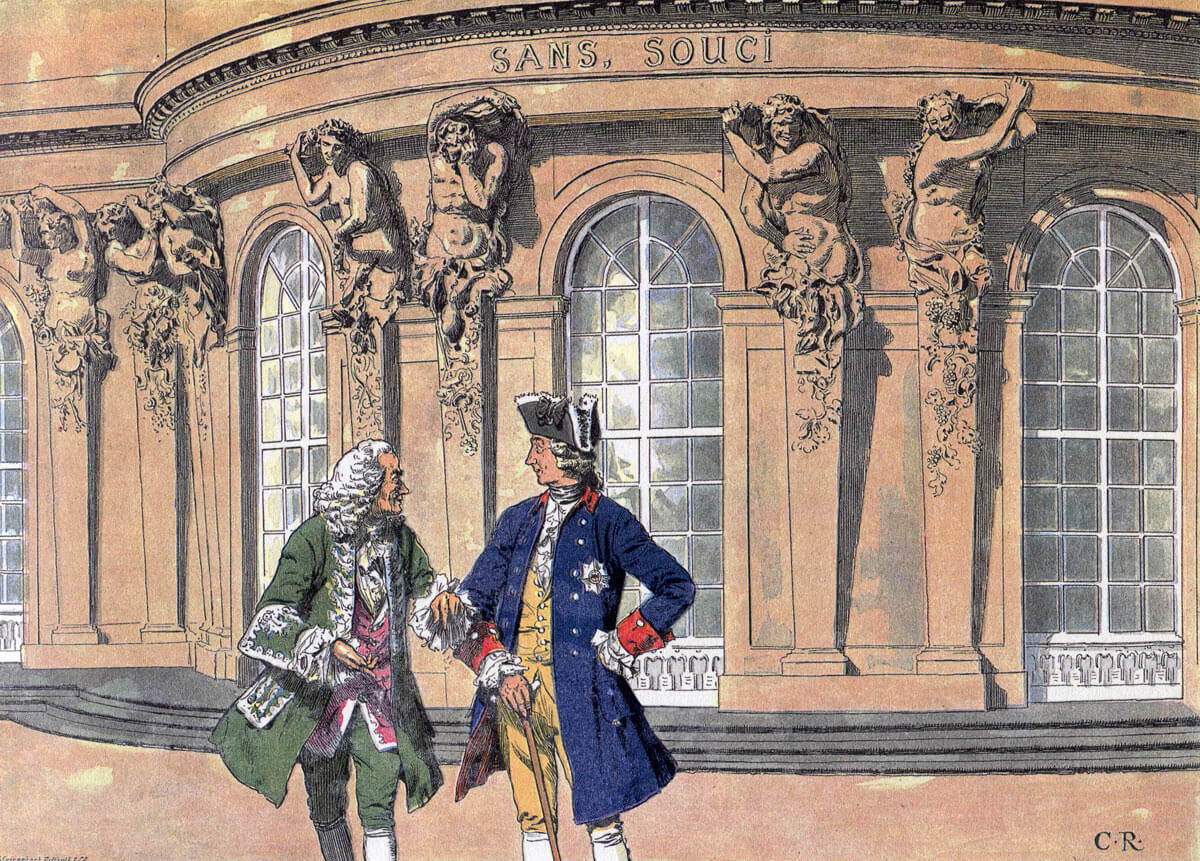Frederick the Great’s second victory over the Austrians in a confused ‘encounter battle’
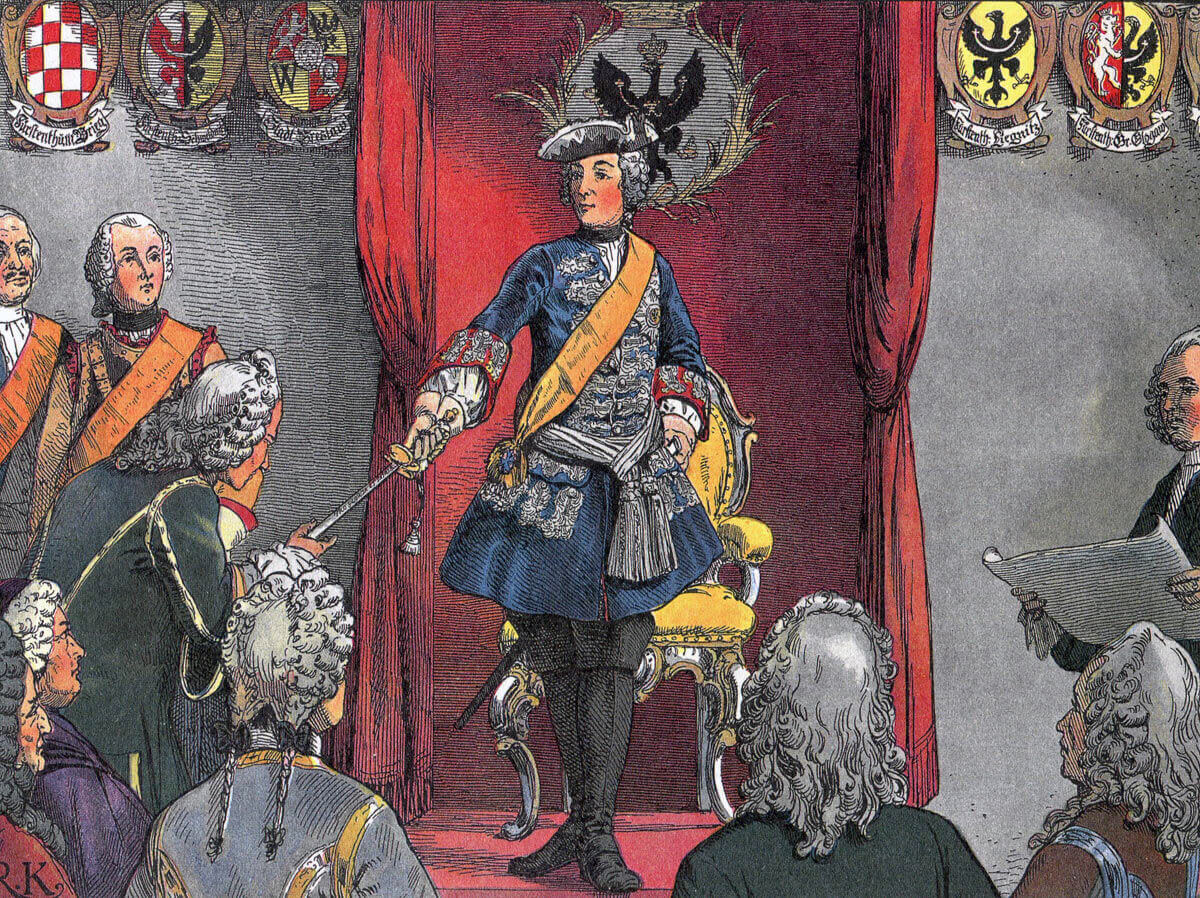
Frederick the Great presenting himself to the city council in Breslau: Battle of Chotusitz 17th May 1742 in the First Silesian War: picture by Carl Röhling
The previous battle in the First Silesian War is the Battle of Mollwitz
The next battle in the Second Silesian War is the Battle of Hohenfriedberg
To the First Silesian War index
Battle : Chotusitz
Date of the Battle of Chotusitz: 17th May 1742.
Place of the Battle of Chotusitz: In the North of Bohemia
War: The First Silesian War.
Contestants at the Battle of Chotusitz: Prussians against an Imperial Austrian Army comprising the various nationalities that made up the Austrian Army (Austrians, Hungarians, Bohemians, Silesians, Croats, Italians and Moravians).
Generals at the Battle of Chotusitz: King Frederick II of Prussia and Prince Leopold Max of Anhalt-Desau commanding the Prussians against Prince Charles of Lorraine, the brother-in-law of the Empress Maria Theresa, commanding the Austrian Army.
Size of the Armies at the Battle of Chotusitz: 27,000 Prussians with 85 guns against 30,000 Austrians with 50 guns.
Winner: The Prussians.
Uniforms and equipment at the Battle of Chotusitz: The Prussian infantry and artillery wore a dark blue coat turned back at the lapels, cuffs and skirts, britches and white thigh length gaiters. From cross belts hung an ammunition pouch, bayonet and ‘hanger’ or small sword. Headgear for the line companies was the tricorne hat, with the receding front corner, bound with white lace. Grenadiers wore the distinctive mitre cap with a brass plate at the front. Fusilier Infantry Regiments and gunners wore the smaller version of the grenadier cap.
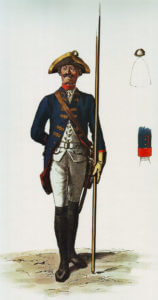
Prussian Infantry Regiment von Below No 11: Battle of Chotusitz 17th May 1742 in the First Silesian War: picture by Adolph Menzel
The infantry carried the musket as their main weapon. The single shot musket could be loaded and fired by a well trained soldier between 3 and 4 times a minute. During the course of his wars Frederick introduced the iron ramrod and then the reversible ramrod which increased the efficiency of his infantry, the wooden ramrod being liable to break in the stress of battle.
The Prussian infantry regiment was based on the cantonment, with soldier joining their local regiment. Soldiers were released for key agricultural times such as sewing and harvesting. In the autumn, reviews were conducted of all regiments to check that each regiment was up to the required standard. Each year certain regiments were selected to conduct the review at Potsdam under the eye of the King. Officers whose soldiers were considered by Frederick not to be of a sufficient standard were subjected to a public tongue lashing and in extreme cases dismissed on the spot.
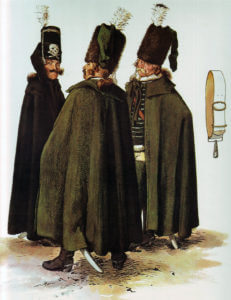
Prussian Husaren-Regiment von Szekely No 1: Battle of Chotusitz 17th May 1742 in the First Silesian War: picture by Adolph Menzel
The efficiency of the Prussian regiments at drill enabled them to move around the battlefield with a speed and manoeuvrability that no other European Army could equal.
Heavy cavalry of the period comprised cuirassiers, whose troopers wore steel breastplates, and dragoons. The main form of light cavalry were the regiments of hussars. The Austrian hussars were Hungarian and the genuine article while the hussars of other armies were given the same dress as Hungarian hussars and expected to perform to similar standards.
The Prussian cuirassiers wore a white coat, steel cuirass, white britches and thigh boots. The headgear was the tricorne hat. Dragoons wore a light blue coat. Weapons were a heavy cavalry sword and single shot flintlock carbine.
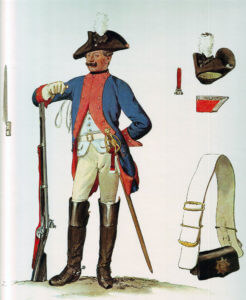
Prussian Dragoner-Regiment von Meinicke No 3: Battle of Chotusitz 17th May 1742 in the First Silesian War: picture by Adolph Menzel
The light cavalry arm was provided by the Prussian Hussar regiments. Frederick found the Prussian Hussars as inadequate for their role as the heavy cavalry regiments. Following Mollwitz and in particular after the First Silesian War the hussars were re-organised and re-trained to provide a first class scouting and light cavalry service. Frederick found in Colonel von Zieten the ideal officer to implement the improvements in the hussar regiments. The Prussian Hussars wore the traditional hussar dress worn by the original Hungarian Hussars of tunic, britches, dolman (slung jacket), busby (fur hat) with bag, sabretache (leather wallet on straps) and curved sword.
The Austrian infantry wore white coats with lapels, cuffs and skirts turned back showing the regimental lining colour. Headgear was the tricorne hat for line infantry and bearskin cap for grenadiers. The infantry weapons were musket, bayonet and hanger small sword. Heavy cavalry wore white coats and hats as for the infantry and were armed with a heavy sword and carbine. The Austrian army contained a large number of irregular units such as the Pandours from the Balkans who wore their ethnic dress without uniformity. Hungarian Hussars provided the light cavalry arm. These Hussars were dressed as described for the Prussian Hussars, were considered to be little more than bandits but were highly effective in all the roles required of light cavalry.
The artillery of each army was equipped with a range of muzzle loading guns. The Prussian Artillery was considerably more efficient at manoeuvring on the battle field. In the changes implemented by Frederick after the First Silesian War horse artillery was introduced to support the Prussian cavalry.
Background to the Battle of Chotusitz
The Prussian Army and State of the middle of the 18th Century owed its strength to the father of Frederick the Great, King Frederick William, the ‘Soldier King’. The Kingdom of Prussia comprised a number of areas scattered across Northern Germany from Minden and the tiny provinces of Jules and Berg in the West to the more compact provinces of Pomerania and East Prussia on the Baltic coast in the East. The capital of Prussia lay in the City of Berlin in the heartland of Brandenburg. During his reign Frederick William established an efficient civil state with the primary duty of supporting a large and well organised army, the bedrock of which was the Prussian Infantry. The noble families of Prussia were required to commit their sons to the army’s officer corps. Unlike the military nobility in other European states the Prussian Officer Corps was expected to devote its energies to learning its fighting trade. Regiments were reviewed on an annual basis by the King and woe betide the officers of any regiment that fell below the required standard of drill and performance.
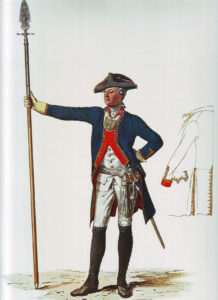
Prussian Infantry Regiment Prinz Leopold Maximilian von Anhalt-Dessau No 27: Battle of Chotusitz 17th May 1742 in the First Silesian War: picture by Adolph Menzel
The Prussian Army established the technique of battlefield drill in the era of the musket. Prussian Infantry regiments could be trusted to move around the battlefield in order and at speed in a way that no other army could. Frederick the Great, while undoubtedly owing a great deal to the work his father had carried out on the army and state, brought his own unique talents to bear in improving the infantry and forging formidable assets out of the arms his father had neglected; principally the cavalry and the artillery, after the dismal performance of the Prussian cavalry at Mollwitz.
Frederick William had a reverence for the established order in Europe, holding the Emperor of Austria in particular awe. He would not have dreamt of launching Prussia on the extraordinary series of wars Frederick the Great began in 1741 by invading the Austrian province of Silesia.
Frederick William died on 31st May 1740 and Frederick II took the throne of the Kingdom of Prussia. On 20th October 1740 the Emperor Charles VI of Austria died leaving the imperial throne to his daughter Maria Theresa. Frederick resolved to seize the Austrian province of Silesia for Prussia.
Prosperous and partly Protestant, Silesia lay on the southern Prussian border along the banks of the river Oder. With its population of 1.5 million Frederick saw Silesia as a significant addition to the Prussian state with its 2.2 million inhabitants. But Frederick would have to fight 3 wars over 22 years with the Austro-Hungarian Empire for his prize.
Following the battle of Mollwitz and the period of re-organisation of the Prussian Army that followed Frederick entered into the secret accord with Austria at Klein-Schnellendorf on 9th October 1741, a truce between the two countries leaving Austria free to continue the war against the French.
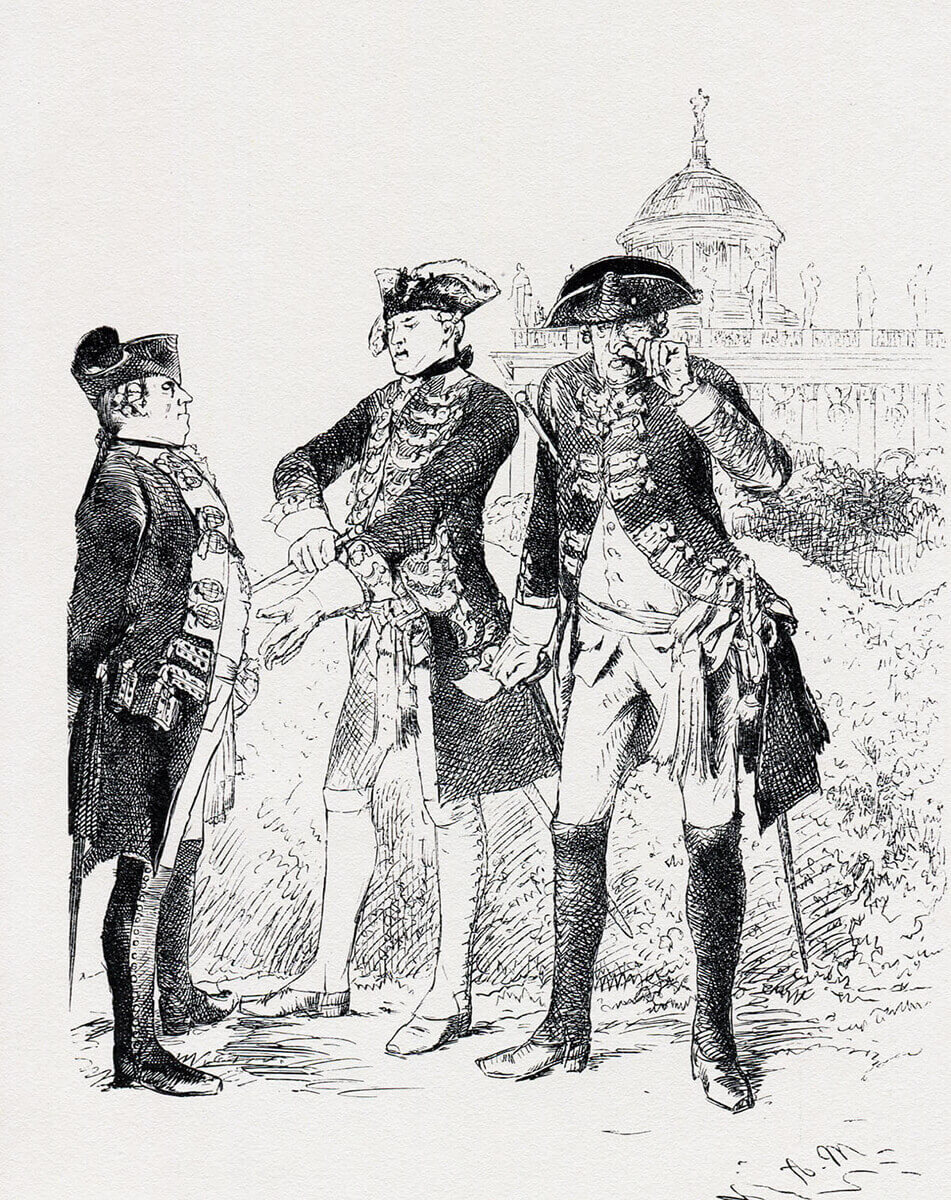
Prussian Guards Officers: Battle of Chotusitz 17th May 1742 in the First Silesian War: picture by Adolph Menzel
In January 1742 Frederick resolved to break the secret accord made with Austria at Klein-Schnellendorf and rejoin the war. In January 1742 Frederick left Berlin and travelled to Dresden, the capital of Saxony, where he persuaded the Saxon Elector to place his army under Frederick’s command. Frederick marched his combined army into Moravia and then Northern Bohemia. The Saxon army returned home its troops exhausted by the demands made upon them by Frederick.
In May 1742 Frederick became aware that a powerful Austrian army was advancing west through Moravia towards him. Frederick directed that the Prussian army concentrate at the Bohemian town of Chrudim. The concentration comprised 35 battalions of infantry and 70 squadrons of cavalry.
The Battle of Chotusitz Account
On 15th May 1742 Frederick left camp with the Prussian advance guard and marched west, leaving the main body of his army to follow the next day under Prince Leopold. At a point near the town of Tschaslau Frederick caught sight of an encampment to the south, clearly of Austrian troops. It seemed to him to indicate the presence of a small force requiring no particular precautions. Frederick marched on.
Prince Leopold, taking the same route the next day, examined the camp with greater care and saw that it contained the whole of Prince Charles’ army. Prince Leopold marched on to his camp site, sending urgent messages to Frederick alerting him that the Austrian Army was coming up behind him.
Frederick set out to return to the main army at 5am on 16th May 1742, gathering up the various detachments as he hurried back along the route he had taken the previous day. Frederick paused at the village of St Jacob to survey the field of battle from the church steeple.
The main Prussian army had encamped overnight at the village of Sehuschitz. At first light Prince Leopold’s infantry had moved forward to occupy the village of Chotusitz. On the Prussian left a force of cavalry led by Lieutenant-General Waldow made its way forward, negotiating the Brslenka stream which flowed south past Chotusitz. A low plateau lay to the west of Chotusitz and on the western edge of the battle field was a lake called the ‘Cirkwitz’. Lieutenant-General Buddenbrock commanding a substantial cavalry force took up position on the southern bank of the lake.
The Austrian army advanced to the attack from the south, infantry in two lines in the centre, flanked by a powerful cavalry force on the left and a smaller body of cavalry on the right.
Both Prussian commanders sent orders to Buddenbrock to attack the Austrians and disrupt their advance. Buddenbrock’s first line of cuirassiers successfully charged home but the second line became disorientated and failed to support the first. Austrian cavalry counter-attacks disrupted the Prussian attack and the charge dissolved into a confused melee over the western section of the battlefield.
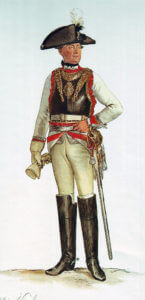
Prussian Kürassier-Regiment von Buddenbrock No 1: Battle of Chotusitz 17th May 1742 in the First Silesian War: picture by Adolph Menzel
The Austrian infantry launched a powerful assault on the Prussian infantry of Prince Leopold in Chotusitz. The houses of the village were of flimsy wooden construction that easily caught fire so possession of the village proved a positive disadvantage. The Prussian began to fall back through Chotusitz.
Lieutenant General Waldow sought to relieve the pressure on the Prussian infantry with a cavalry attack on the left wing. Waldow penetrated the Austrian cavalry and his force charged in an arc across the rear of the Austrian army, joining up with the remnants of Buddenbrock’s cavalry.
During the course of the Austrian attack on Chotusitz, Frederick held his force of infantry out of sight behind the plateau in the middle of the battlefield to the west of Chotusitz. He finally joined the battle by forming his battalions in a line flanking the Austrian attack and delivering volleys into the Austrian infantry. The fire of these regiments was the deciding factor in the battle. The Austrians retreated in disorder to the south leaving the field to the Prussians.
Frederick’s chief of staff urged an immediate pursuit but Frederick declined. The cavalry was in disorder and it was impractical to pursue with the infantry.
Casualties at the Battle of Chotusitz: Prussian casualties were 4,800 dead and wounded. Austrian casualties were 6,400 dead and wounded.
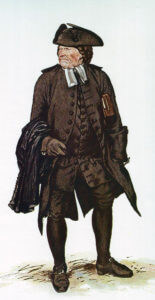
Prussian Infantry Chaplain: Battle of Chotusitz 17th May 1742 in the First Silesian War: picture by Adolph Menzel
Aftermath to the Battle of Chotusitz:
After the battle Prince Charles marched the Austrian army west to confront the French, allies of Prussia, leaving Frederick and his army to settle into a long term encampment at Kuttenburg, some 30 miles from the Chotusitz battlefield.
On 11th June 1742 Frederick entered into the Treaty of Breslau with the Austrians, bringing the First Silesian War to an end and implementing a brief truce in Frederick’s struggle with Maria Theresa. The treaty acknowledged Frederick’s right to hold most of Silesia and the Duchy of Glatz.
Frederick embarked on a frenzied reformation of the Prussian cavalry and artillery and implemented his plans to enlarge the army generally.
The pause in hostilities would last only until 1744.
Anecdotes from the Battle of Chotusitz:
- After this second victory over the Austrians Frederick noted with some satisfaction his growing reputation across Europe.
- A hero of the battle was Joachim Seegebart, the padre of Prince Leopold’s regiment who rallied several companies of shaken Prussian infantry in Chotusitz and then took in hand a party of dragoons. Frederick rewarded the fighting pastor with a civilian ecclesiastical living at Etzin in Brandenburg.
- Voltaire chided Frederick for not fighting the battle at a place with a more ‘euphonious’ name than Chotusitz.
- Frederick criticised Prince Leopold after the battle for trying to hold Chotusitz. He promoted Buddenbrock to full general.
- It was at the Battle of Chotusitz that the Austrian officer, Prince Joseph Wenzel Liechtenstein, was struck by the devastating power of the Prussian artillery. Following the battle Liechtenstein took the Austrian Artillery in hand and built it into so powerful a force that it was acknowledged at the outset of the Seven Years War that the Austrian Artillery exceeded the Prussian Artillery in effect on the battlefield.
References for the Battle of Chotusitz:
- Frederick the Great by Thomas Carlyle
- Frederick the Great by Christopher Duffy
- The Army of Frederick the Great by Christopher Duffy
- The Army of Maria Theresa by Christopher Duffy
The previous battle in the First Silesian War is the Battle of Mollwitz
The next battle in the Second Silesian War is the Battle of Hohenfriedberg
To the First Silesian War index
